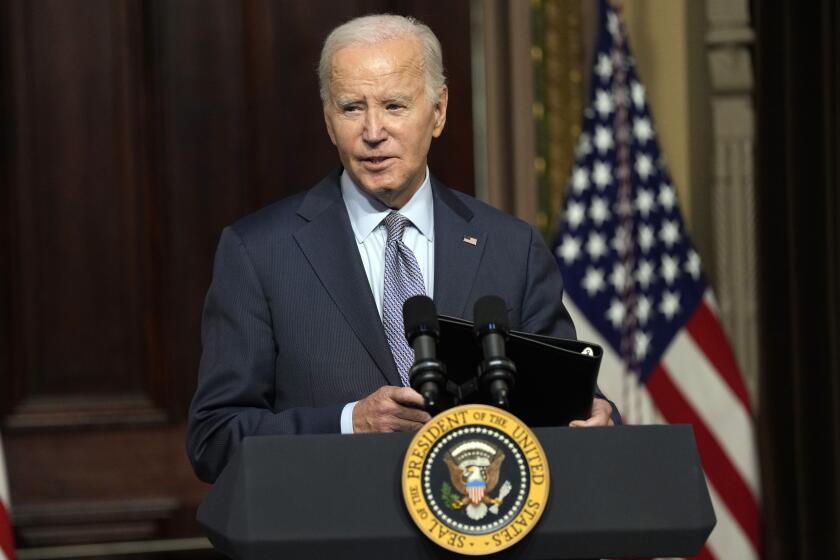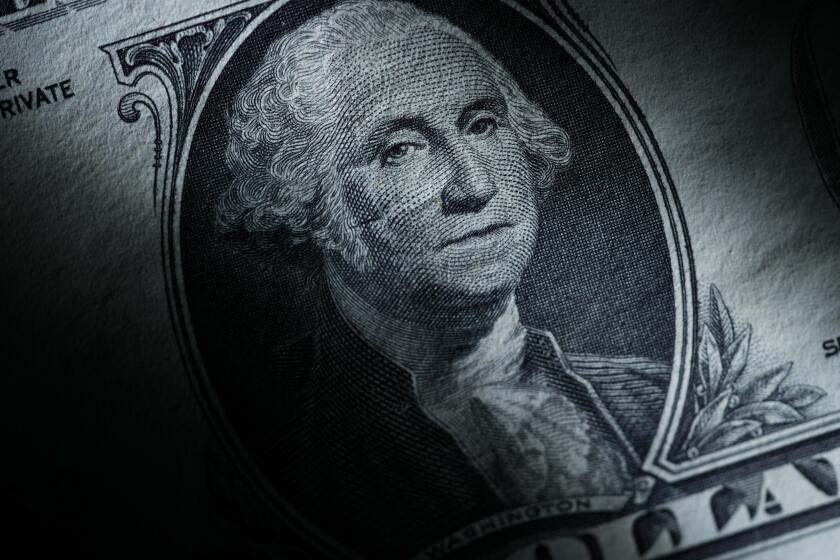S&P 500 inches up, extending its winning streak to 8 days; oil falls again

- Share via
U.S. stocks were largely stuck in place Wednesday as Wall Street continues to recalibrate after its sharp recent swings.
The Standard & Poor’s 500 edged up 4.40 points, or 0.1%, to 4,382.78 in a day of quiet trading. Its movements have become much calmer after the index screamed to its best week of the year last week, which itself came after months of painful losses.
Though the gain was slight, it was enough to extend the index’s winning streak to eight days. That ties its longest such streak since a nine-day run 19 years ago.
The Dow Jones industrial average slipped 40.33 points, or 0.1%, to 34,112.27, and the Nasdaq composite rose 10.56 points, or 0.1%, to 13,650.41.
Eli Lilly was one of the strongest forces pushing upward on the market. It rose 3.2% after U.S. regulators said its popular diabetes treatment, Mounjaro, can be sold as a weight-loss drug and tap into a market with massive potential.
American Airlines, Delta Air Lines and United Airlines were also toward the front of the market, and each rose more than 2% as oil prices continued to drop and ease the pressure on fuel costs.
Warner Bros. Discovery tumbled 19% after reporting a worse loss for the latest quarter than analysts expected. It also lost more streaming subscribers than forecast.
The reporting season for summertime profits is winding down, and the majority of companies have again been topping Wall Street’s forecasts. That’s usually the case, and it’s offered some support for the stock market. But the big driver for stock price movements since the summer has been what yields are doing in the bond market.
Biden’s economy is much better than Trump’s was, so why does he get lower marks for his economic management?
The 10-year Treasury yield fell to 4.51% from 4.57% late Tuesday, helping to impart calm across financial markets.
A swift rise in the 10-year yield that began in the summer had earlier knocked the S&P 500 down by more than 10% from its peak for the year. The 10-year yield briefly topped 5% to reach its highest level since 2007, as it caught up with the Federal Reserve’s main interest rate, which is above 5.25% and at its highest level since 2001.
The Fed has aggressively raised rates in hopes of slowing the economy and hurting investment prices enough to put downward pressure on inflation and get it back to the central bank’s 2% goal.
Last week, though, investors took comments from Fed Chair Jerome H. Powell to indicate that the central bank’s interest rate hikes may be done. He said the summer’s jump in Treasury yields could substitute for further hikes to rates if they remain “persistent.” That triggered a sharp easing in Treasury yields, which in turn helped stocks to rally.
Now, investors are trying to handicap what may come next. A wide range of outcomes is still possible for the U.S. economy, with the 10-year yield potentially easing to as low as 3% if it were to fall into a painful recession, according to Bank of America strategists led by Bruno Braizinha. At the same time, they said the 10-year yield could rise back above 5% if the economy remains resilient.
A sharp drop in oil prices recently could take more pressure off inflation, which in turn could help the Fed feel more confident about holding rates instead of raising them further.
Banks are offering all kinds of incentives to get your money. Here’s what to look for in the fine print.
The price for a barrel of U.S. crude oil is back to where it was in July. It dropped an additional $2.04 to settle at $75.33. Brent crude, the international standard, fell $2.07 to $79.54.
Oil prices have been tumbling since topping $90 a little more than a month ago. The Israel-Hamas war raised concerns about potential disruptions to supplies, which made prices volatile for a while. But worries about demand are still high given faltering economies around the world, particularly in China.
Stock indexes fell 0.2% in Shanghai and 0.6% in Hong Kong, joining modest losses across much of the rest of Asia. Stocks were higher in Europe.
Elsewhere on Wall Street, Axon Enterprise rose 6.1% after the maker of Tasers, body cameras and other equipment reported stronger profit for the latest quarter than analysts forecast.
Ralph Lauren rose 3.2% after reporting stronger profit for the latest quarter than analysts forecast.
EBay sank 2% after its forecast for revenue for the last three months of 2023 fell short of analysts’ expectations.
Rivian Automotive swung from an early gain to a loss of 2.4% after the electric vehicle company raised its forecast for how many vehicles it will produce this year and reported weaker profit than expected for the latest quarter.
Associated Press writer Yuri Kageyama contributed to this report.
More to Read
Inside the business of entertainment
The Wide Shot brings you news, analysis and insights on everything from streaming wars to production — and what it all means for the future.
You may occasionally receive promotional content from the Los Angeles Times.












